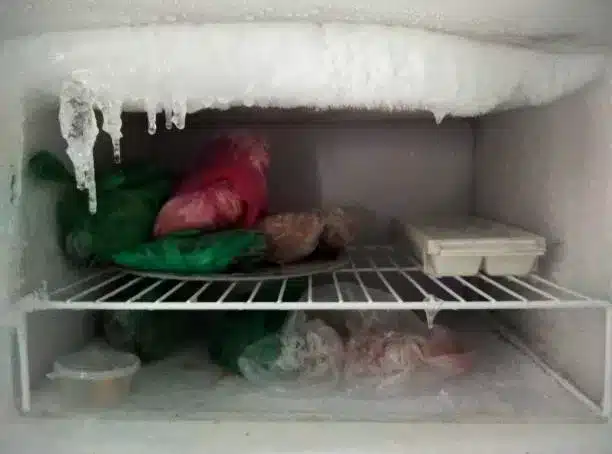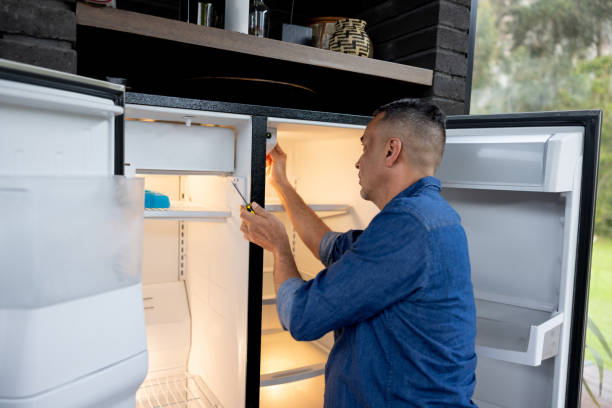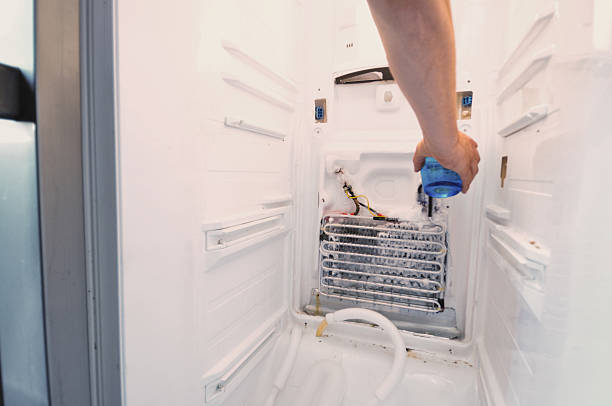
If you have a GE freezer, you may have noticed some icicles forming inside it. This can be annoying and messy, not to mention a waste of energy and space. But why do icicles form in freezers, and how can you prevent or fix them? In this post, we’ll answer these questions and help you troubleshoot your GE freezer making icicles.
Icicles form in freezers when warm, moist air enters the freezer and freezes on the cold surfaces. This can happen due to a faulty door seal, a clogged drain tube, an overflowing ice maker, or leaving the door open too long.
One of the most common causes of icicles in freezers is a bad door seal. The door seal, or gasket, is the rubber strip that runs along the edge of the door and creates an airtight seal when the door is closed. If the seal is damaged, worn out, or dirty, it can allow warm air to leak into the freezer and create condensation and frost.
To check the door seal, inspect it for any cracks, tears, or gaps. You can also perform a dollar bill test: close the door on a dollar bill and try to pull it out. If it slides out easily, the seal is not tight enough. You can try to clean the seal with a damp cloth and mild soap, or adjust the hinges to align the door better. If that doesn’t work, you may need to replace the seal with a new one.

Another possible cause of icicles in freezers is a clogged drain tube. The drain tube is a small hole at the bottom of the freezer that allows water from defrosting to drain out. If the tube is blocked by ice or debris, the water can back up and freeze inside the freezer.
To clear the drain tube, you’ll need to unplug the freezer and remove any food or shelves from the bottom. Locate the drain hole and use a turkey baster or a small funnel to pour hot water into it. This should melt any ice or clear any obstruction. You can also use a pipe cleaner or a wire hanger to gently poke through the tube and dislodge any debris. Be careful not to damage the tube or puncture any other parts.

A third possible cause of icicles in freezers is an overflowing ice maker. The ice maker is a device that fills a tray with water and freezes it into cubes. If the water valve is faulty, the water pressure is too high, or the tray is misaligned, the water can spill over and freeze on the walls or shelves of the freezer.
To adjust the ice maker, you’ll need to check the water valve, which is located at the back of the freezer where the water supply line connects to it. Make sure it’s not leaking or dripping, and replace it if necessary. You can also adjust the water pressure by turning the valve slightly clockwise or counterclockwise until you get a steady stream of water.
Next, check the ice maker tray and make sure it’s level and aligned with the fill tube. You can use a level tool or just eyeball it. If it’s tilted or crooked, you can adjust it by loosening or tightening the screws that hold it in place.
A final possible cause of icicles in freezers is leaving the door open too long. This can let warm air enter and mix with cold air inside, creating humidity and frost. It can also affect the temperature and performance of your freezer.
To avoid leaving the door open, you should plan ahead what you need to take out or put in before opening the door. You should also avoid opening and closing the door too frequently or unnecessarily. If you have kids or pets who like to sneak into your freezer, you may want to install a lock or an alarm on your door.
Q: How do I get rid of icicles in my freezer?
A: To get rid of icicles in your freezer, you can use a hair dryer on low heat to melt them gently. You can also use a plastic scraper or spatula to chip them off carefully. Do not use any sharp objects or high heat sources that could damage your freezer.
Q: How often should I defrost my freezer?
A: The frequency of defrosting your freezer depends on how much frost builds up inside it. Generally, you should defrost your freezer when there is more than 1/4 inch of frost on any surface. You can also follow your manufacturer’s recommendations for defrosting your specific model.
Q: How do I prevent frost from forming in my freezer?
A: To prevent frost from forming in your freezer, you should keep the door closed as much as possible, check the door seal regularly, clear the drain tube periodically, and adjust the ice maker if needed. You should also avoid putting warm or uncovered food in your freezer, and keep the temperature between 0°F and 5°F.
Icicles in freezers can be a nuisance and a sign of a problem with your freezer. By following these troubleshooting tips, you can prevent or fix your GE freezer making icicles and enjoy a frost-free freezer.
